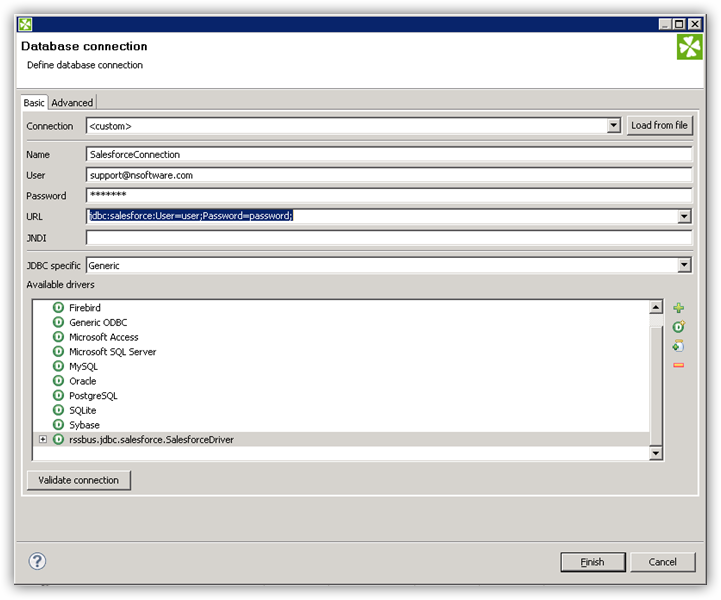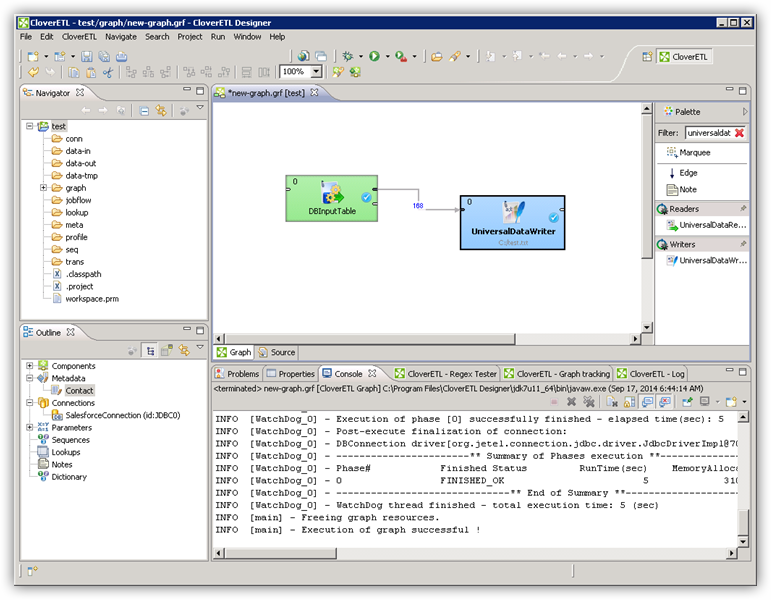Discover how a bimodal integration strategy can address the major data management challenges facing your organization today.
Get the Report →Connect to SQL Analysis Services Data in CloverDX (formerly CloverETL)
Transfer SQL Analysis Services data using the visual workflow in the CloverDX data integration tool.
The CData JDBC Driver for SQL Analysis Services enables you to use the data transformation components in CloverDX (formerly CloverETL) to work with SQL Analysis Services as sources. In this article, you will use the JDBC Driver for SQL Analysis Services to set up a simple transfer into a flat file. The CData JDBC Driver for SQL Analysis Services enables you to use the data transformation components in CloverDX (formerly CloverETL) to work with SQL Analysis Services as sources. In this article, you will use the JDBC Driver for SQL Analysis Services to set up a simple transfer into a flat file.
Connect to SQL Analysis Services as a JDBC Data Source
- Create the connection to SQL Analysis Services data. In a new CloverDX graph, right-click the Connections node in the Outline pane and click Connections -> Create Connection. The Database Connection wizard is displayed.
- Click the plus icon to load a driver from a JAR. Browse to the lib subfolder of the installation directory and select the cdata.jdbc.ssas.jar file.
- Enter the JDBC URL.
To connect, provide authentication and set the Url property to a valid SQL Server Analysis Services endpoint. You can connect to SQL Server Analysis Services instances hosted over HTTP with XMLA access. See the Microsoft documentation to configure HTTP access to SQL Server Analysis Services.
To secure connections and authenticate, set the corresponding connection properties, below. The data provider supports the major authentication schemes, including HTTP and Windows, as well as SSL/TLS.
-
HTTP Authentication
Set AuthScheme to "Basic" or "Digest" and set User and Password. Specify other authentication values in CustomHeaders.
-
Windows (NTLM)
Set the Windows User and Password and set AuthScheme to "NTLM".
-
Kerberos and Kerberos Delegation
To authenticate with Kerberos, set AuthScheme to NEGOTIATE. To use Kerberos delegation, set AuthScheme to KERBEROSDELEGATION. If needed, provide the User, Password, and KerberosSPN. By default, the data provider attempts to communicate with the SPN at the specified Url.
-
SSL/TLS:
By default, the data provider attempts to negotiate SSL/TLS by checking the server's certificate against the system's trusted certificate store. To specify another certificate, see the SSLServerCert property for the available formats.
You can then access any cube as a relational table: When you connect the data provider retrieves SSAS metadata and dynamically updates the table schemas. Instead of retrieving metadata every connection, you can set the CacheLocation property to automatically cache to a simple file-based store.
See the Getting Started section of the CData documentation, under Retrieving Analysis Services Data, to execute SQL-92 queries to the cubes.
Built-in Connection String Designer
For assistance in constructing the JDBC URL, use the connection string designer built into the SQL Analysis Services JDBC Driver. Either double-click the JAR file or execute the jar file from the command-line.
java -jar cdata.jdbc.ssas.jarFill in the connection properties and copy the connection string to the clipboard.
![Using the built-in connection string designer to generate a JDBC URL (Salesforce is shown.)]()
A typical JDBC URL is below:
jdbc:ssas:User=myuseraccount;Password=mypassword;URL=http://localhost/OLAP/msmdpump.dll; -
HTTP Authentication

Query SQL Analysis Services Data with the DBInputTable Component
- Drag a DBInputTable from the Readers selection of the Palette onto the job flow and double-click it to open the configuration editor.
- In the DB connection property, select the SQL Analysis Services JDBC data source from the drop-down menu.
- Enter the SQL query. For example:
SELECT Fiscal_Year, Sales_Amount FROM Adventure_Works
Write the Output of the Query to a UniversalDataWriter
- Drag a UniversalDataWriter from the Writers selection onto the jobflow.
- Double-click the UniversalDataWriter to open the configuration editor and add a file URL.
- Right-click the DBInputTable and then click Extract Metadata.
- Connect the output port of the DBInputTable to the UniversalDataWriter.
- In the resulting Select Metadata menu for the UniversalDataWriter, choose the Adventure_Works table. (You can also open this menu by right-clicking the input port for the UniversalDataWriter.)
- Click Run to write to the file.








